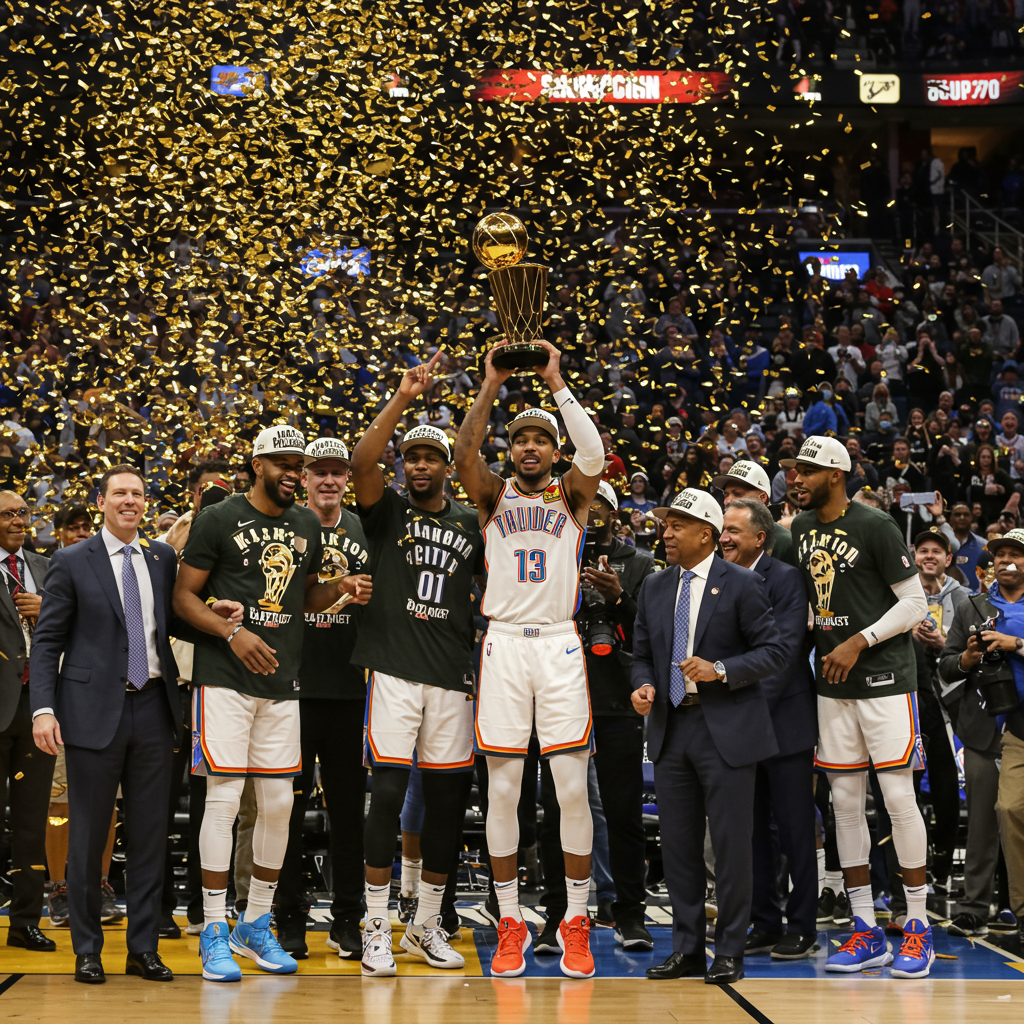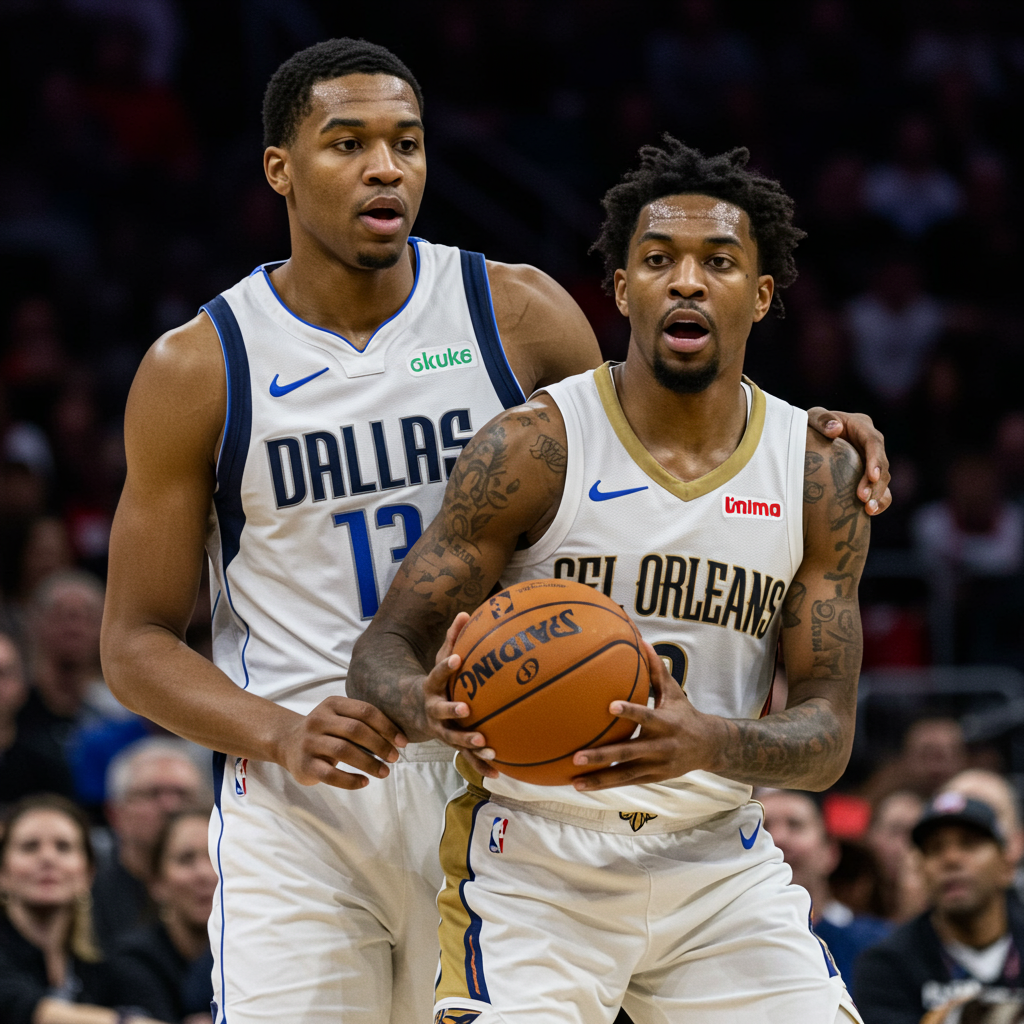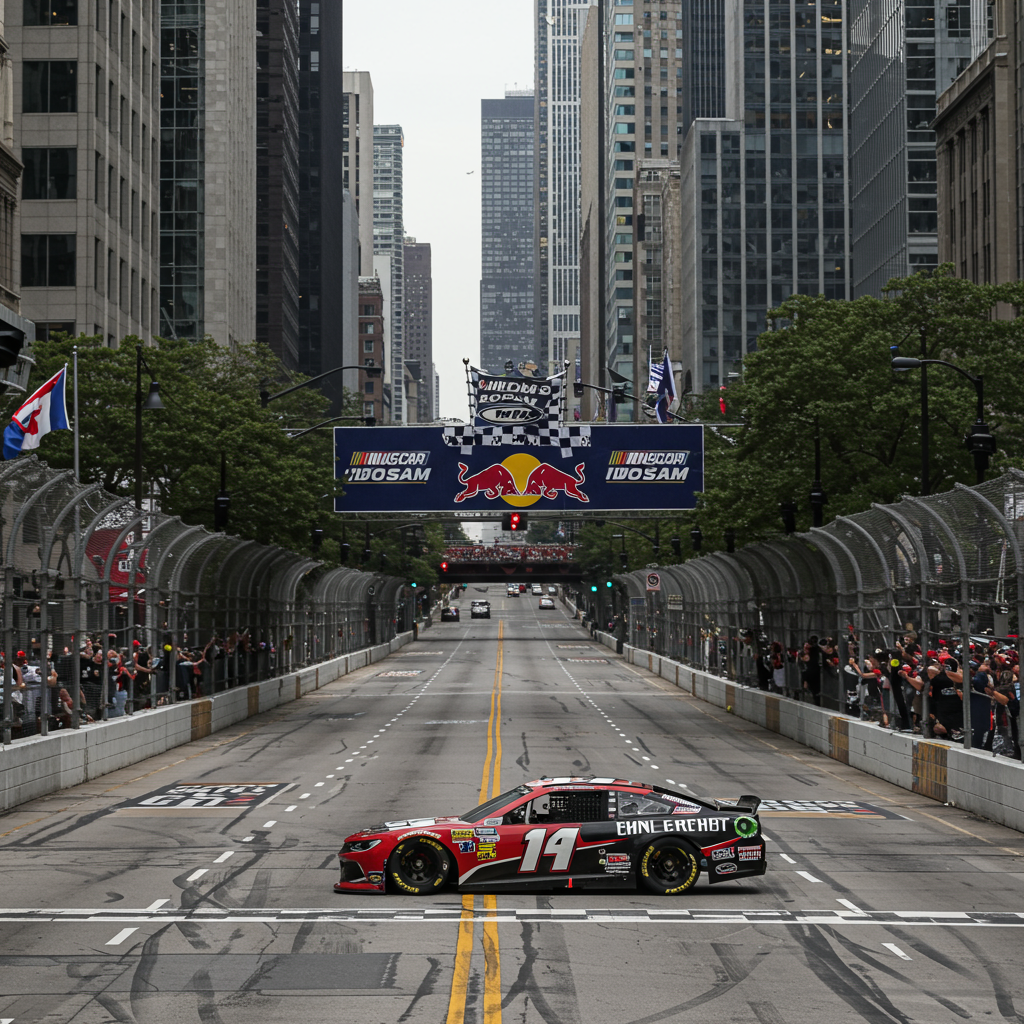The Oklahoma City Thunder didn’t just win the 2025 NBA Championship; they did it in historically dominant fashion, capping a season that captivated the league and ended the city’s long wait for an NBA title. This young, dynamic squad defied expectations, proving that defense, strategic innovation, and superstar talent can combine for unparalleled success. Their championship run, which saw them defeat the Indiana Pacers in a thrilling seven-game NBA Finals watched by record audiences (Game 7 was the most-watched Finals game in six years, peaking at 19.3 million viewers), was built on a foundation of remarkable statistics.
While the upcoming championship parade through downtown Oklahoma City celebrates this historic achievement, a look back at the numbers reveals just how special the 2024-25 Thunder truly were. They are one of the youngest teams ever to hoist the Larry O’Brien Trophy, a testament to their precocious talent. Here are three key stats that tell the story of Oklahoma City’s remarkable, championship-winning season.
Historic Dominance: Unprecedented Point Differential
The 2024-25 Oklahoma City Thunder etched their name into the NBA record books with a level of statistical dominance rarely seen. By winning a combined 84 games across the regular season and playoffs, they joined an elite group, tying for the third-most wins in NBA history, alongside the legendary 1996-97 Chicago Bulls.
However, their true separation from historic teams comes in their staggering point differential. Over their 105 total games, the Thunder outscored opponents by a cumulative 1,243 points. This isn’t just good – it’s the largest cumulative point differential in NBA history, surpassing teams like the ’70-’71 Bucks, ’16-’17 Warriors, and ’95-’96 Bulls.
Their average point differential of 11.8 points per game ranks fourth all-time among teams with a winning percentage of .742 or higher, creating a significant statistical gap between them and the fifth-ranked ’71-’72 L.A. Lakers. Adding to this statistical might, the Thunder set an NBA record with 12 wins by 30 points or more (regular season + playoffs) and are the only team in league history with multiple playoff victories decided by at least 40 points. These numbers paint a clear picture of a team that didn’t just win, but often overwhelmed opponents.
Defense Wins Championships: A Statistical Masterclass
The age-old adage holds true for the Thunder: defense still wins championships. Oklahoma City was the undisputed best defensive team in the regular season, boasting a defensive rating 2.5 points per 100 possessions better than the second-ranked Magic. This was the second-largest gap between the top two defensive teams in the 29 seasons of play-by-play data.
Their defensive prowess only intensified in the postseason. They stifled high-powered offenses, holding playoff opponents like the Memphis Grizzlies and Denver Nuggets to dramatically lower scoring efficiencies (19.6 and 15.0 fewer points per 100 possessions, respectively, than their regular-season marks). These defensive performances rank among the best in 29 years of playoff data.
The Thunder’s defense was fueled by a unique combination of disruption and stout interior protection:
Turnover Generation: They led the league in regular-season steals (10.2 per 100 possessions), the highest rate in 12 years. Their playoff steal rate (10.7 per 100 possessions) was the best for any team advancing past the first round in 26 years. Their 247 total postseason steals set an all-time NBA record, 41 more than any team in the 52 years steals have been recorded.
Rim Protection: The Thunder ranked first in opponent field goal percentage allowed in the restricted area (62.2%) and fifth in allowing the lowest percentage of opponent shots from that zone (25% in the regular season, 24% in the playoffs).
This relentless pressure was evident in the Finals, where they held the Pacers to 9.6 fewer points per 100 possessions than Indiana averaged in previous rounds and delivered a championship-clinching Game 7 defensive masterpiece, holding Indiana to just 91 points on 92 possessions.
Shai Gilgeous-Alexander’s Historic MVP Season
At the heart of the Thunder’s success was the ascendance of superstar Shai Gilgeous-Alexander, who delivered one of the most individually dominant seasons in NBA history. SGA earned the rare trifecta: regular-season Kia MVP, the scoring title, and the Bill Russell NBA Finals MVP. He’s the first player in 25 years to accomplish this remarkable feat.
Gilgeous-Alexander also joined an exclusive club, becoming just the fourth player ever to average at least 30 points per game combined across the regular season and playoffs for a championship team, sharing space with legends like Kareem Abdul-Jabbar, Rick Barry, and Michael Jordan. Looking at these seven individual seasons by those four players, SGA stands out:
He was the most efficient scorer, posting the highest True Shooting Percentage (TS%) at 62.2% and effective Field Goal Percentage (eFG%) at 55.1%.
He also averaged the most assists per game among this group (6.4 APG).
His 62.2% TS% over 99 games (averaging 32.0 PPG) is the highest recorded among the 24 instances of a player averaging at least 32 points over 80+ total games in a season. In the playoffs, SGA showcased clutch scoring, recording 15 games with at least 30 points (one shy of the record) and setting a single-postseason record with 12 games featuring at least 30 points and 5 assists.
Beyond the Box Score: Tactical Innovation and Veteran Savvy
While the raw numbers tell a powerful story, the Thunder’s success was also fueled by sophisticated tactics and the quiet impact of veterans like Alex Caruso. Caruso, the team’s oldest player and only member with prior championship experience, served as a crucial X-factor and vocal leader, embodying the team’s mantra of being “where his feet were” – focused squarely on the present moment.
Coach Mark Daigneault successfully deployed unique “small-ish ball” lineups, often featuring four guards alongside a single big man. This strategy, seemingly counterintuitive to the strengths of their promising young centers Chet Holmgren and Isaiah Hartenstein, worked because of the centers’ individual effectiveness even when separated (lineups with Holmgren on/Hartenstein off had a +16.1 net rating; Hartenstein on/Holmgren off a +11.7 net rating).
Caruso’s specific skill set was key to this approach. His strength and quickness allowed the Thunder to utilize guard-to-guard screening actions, forcing defenses to adapt and opening up opportunities. Defensively, this smaller, faster lineup allowed the Thunder to “climb up in the ball,” play passing lanes, and cover ground rapidly, enabling crisp rotations and stifling defensive pressure that forced 23 turnovers from the Pacers in Game 7 alone, leading to 32 crucial points. This tactical flexibility, powered by veteran savvy and the guards’ speed, complemented their league-leading defensive statistics.
A Youthful Triumph and a Promising Future
Ultimately, the Oklahoma City Thunder’s championship season was defined by a blend of statistical supremacy, individual brilliance, tactical innovation, and the energy of youth. As the second-youngest championship team in NBA history, they faced a steep learning curve. A lighthearted anecdote from the locker room celebration perfectly captured this: despite winning the title, most players didn’t know how to pop champagne corks, resorting to YouTube tutorials before Alex Caruso stepped in to teach them the ropes.
This blend of youthful inexperience and veteran guidance, however, promises a bright future. With all key players under contract for the following season, the Thunder are poised to contend again. As Caruso put it, looking ahead, “We’ll be better next year.”
The 2024-25 Thunder season was a statistical marvel, a defensive masterpiece, an MVP showcase, and a tactical triumph. These three defining stats, supported by their innovative approach and youthful exuberance, cemented their place in NBA history as one of the most dominant and unique champions the league has ever seen.



